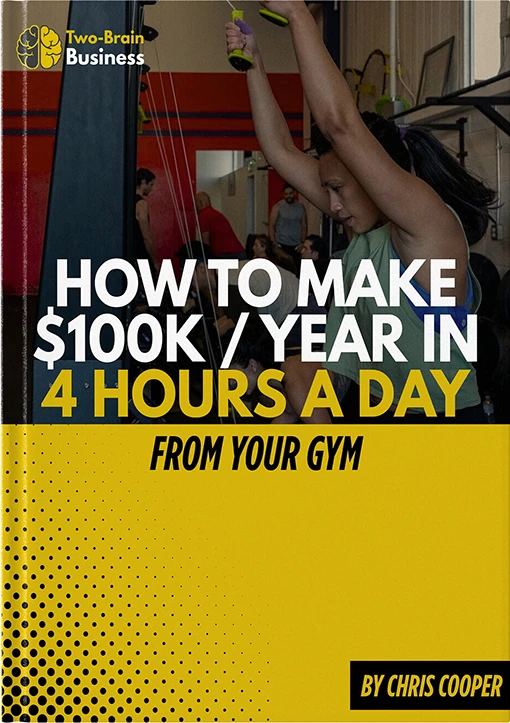You started a gym because you love fitness. Me, too.
But 99 percent of your clients won’t start gyms, and a significant number of them don’t love fitness at all.
These people show up, work hard and smile, but they’re not at the gym because they love the burn or can’t stop talking about the fitness method you love.
In any gym, a large number of clients are there simply to trade effort for reward, just as they trade work for income.
This is a major realization for a gym owner, and it should change the way you run your business. Because if you don’t know the exact rewards clients want, you can’t create optimal programming for them.
And you can’t make them happy enough to keep putting in effort.

I made a huge mistake for years: I thought people came to my gym because they loved CrossFit and wanted bigger deadlifts and better Fran times.
In the early days, that’s exactly what my early adopters wanted, and my programming did the trick.
But after a year or two, the people who came to my door didn’t care about the Games, Helen, Cindy or snatches.
They just wanted to solve specific fitness problems, and they were wondering if this new method might be the answer.
I missed that for years, and my one-size-fits-all general fitness plan produced less-than-optimal progress for many people.
My retention reflected this error.
Assumptions and Unasked Questions
“Why would anyone not want to tear their hands and lie quivering on the floor after Fran?”
“Why would clients cherry-pick met-cons and skip strength work?”
“Why do some clients despise Olympic weightlifting and gymnastics?”
When I review these questions now, I feel like an idiot. But that was my mentality back in the day. I made assumptions about why people came to my gym: They wanted to do what I wanted to do. Except many didn’t.
In 2025, it’s clear to me that a few people love fitness and many people utterly hate the idea of regular movement—government fitness stats and the obesity epidemic are proof.
In between are the many people who aren’t passionate about fitness but view it as a tool to accomplish their goals.
“I’ll do this stuff I don’t enjoy so I can lose 10 lb. before the wedding on Sept. 20. But I’m 100 percent not going to do clean and jerks. Ever. If I’m not doing a lot of cardio, I will feel like I’m failing.”
“I’d rather watch TV, but I’ll do strength work because I want nice arms. I think heavy deadlifts are stupid.”
“I want a pizza, but I’ll stick to my coach’s plan because abs. I will not trade hand tears and bloody shins for abs.”
That’s what’s going on inside many of your clients. But you’ll never know if you don’t ask about their goals and preferences, and your programming will miss the mark.
I’ll skip past the part about how Goal Review Sessions improve your gym’s financial metrics to focus on people and results:
You just can’t help clients if you don’t know what they want to accomplish and what they’ll do to accomplish that goal. Without that info, you are fumbling in the dark.
Like I did when I tried to trick people into running 5 km because I thought they needed to. They probably did, but they didn’t want to. I could have adjusted my plan to use preferred workouts to accomplish their goals, not my goals for them.
Maybe you currently see goal reviews as a pain-in-the-ass sales tactic, but I’ll challenge that:
How can you tell a client what to do in your gym if you don’t know their exact goal and what they’ll do to accomplish it?
You can’t.
So if you really want to help clients get results fast and retain these members for years, you must start doing Goal Review Sessions—all details are here.
And you must keep using the sessions because goals and preferences change over time.
If you stay connected to your clients, you’ll be able to keep solving their problems.
And that’s why you opened a gym in the first place, right?

